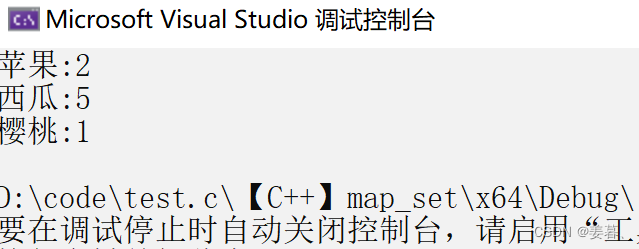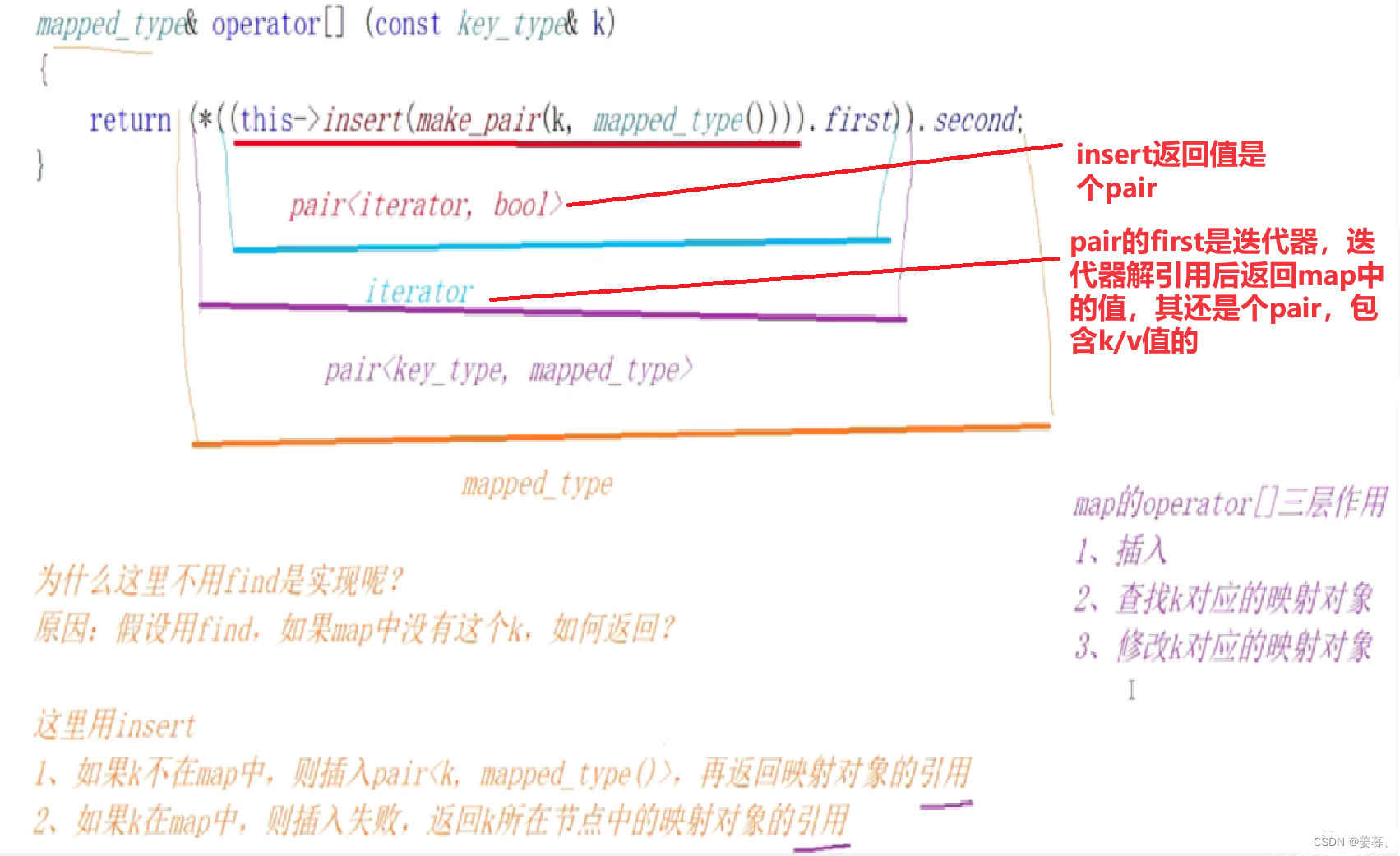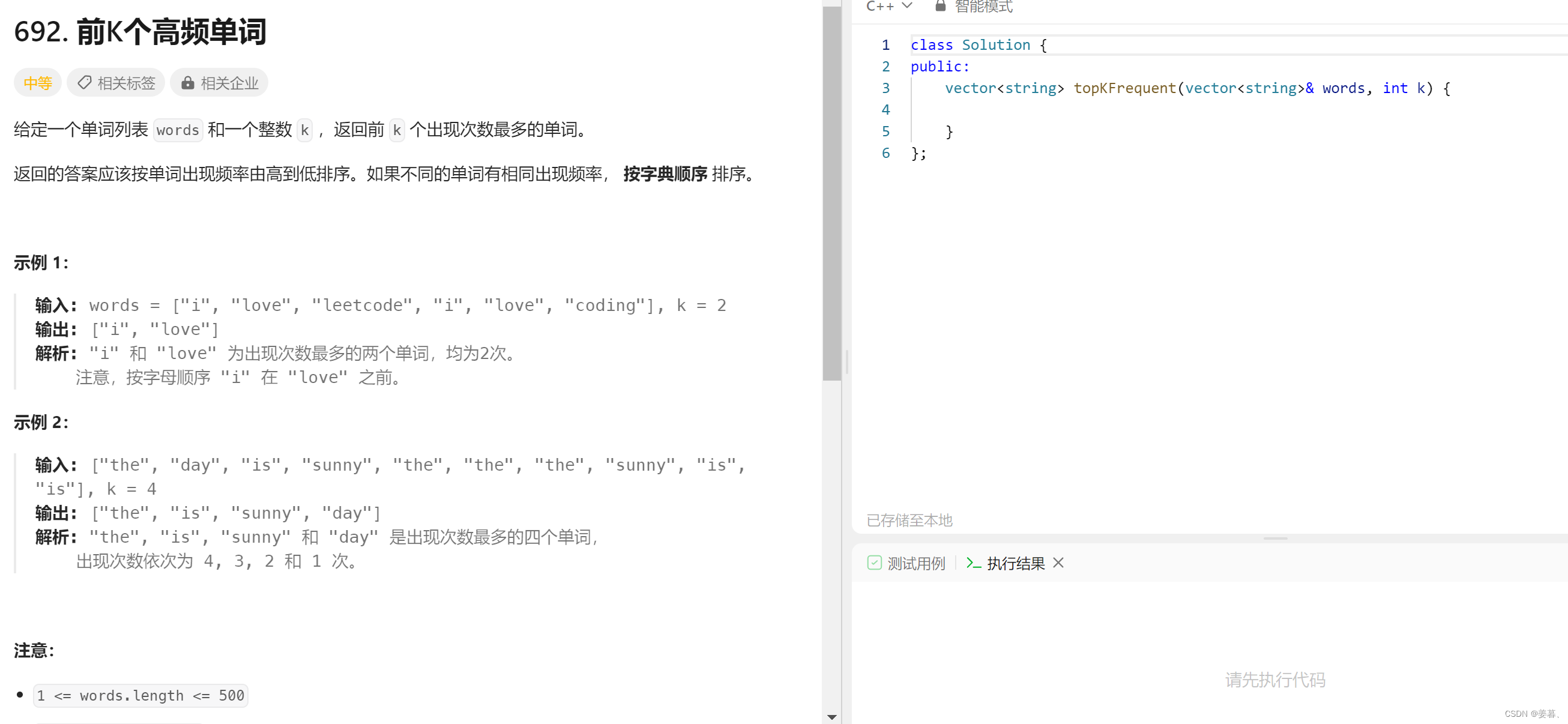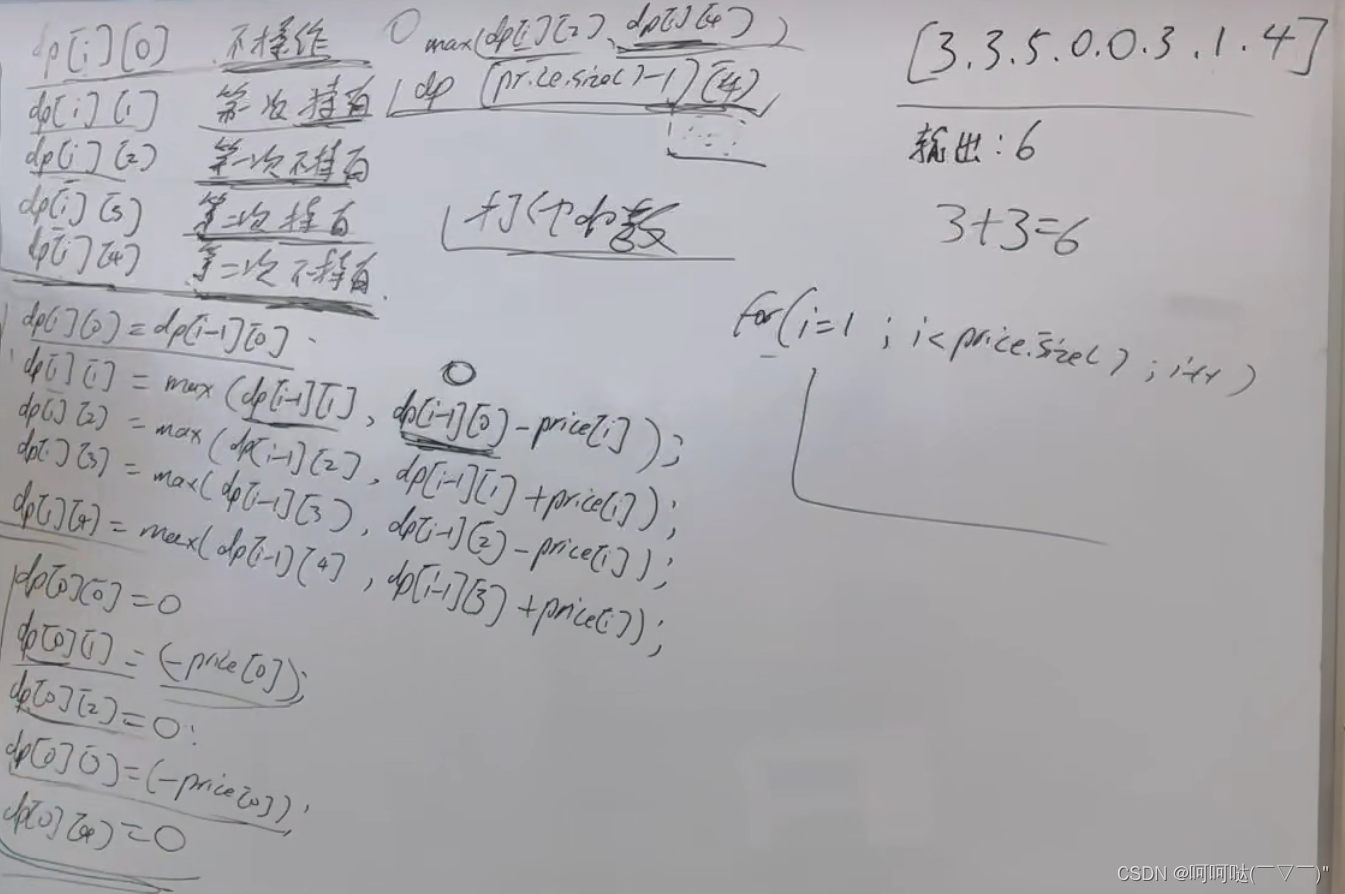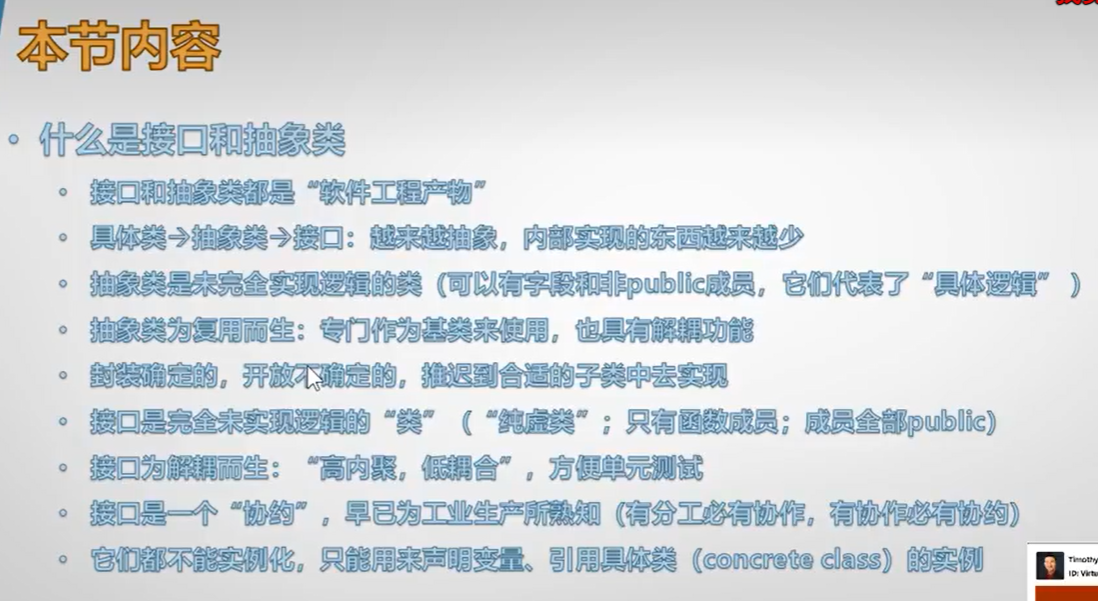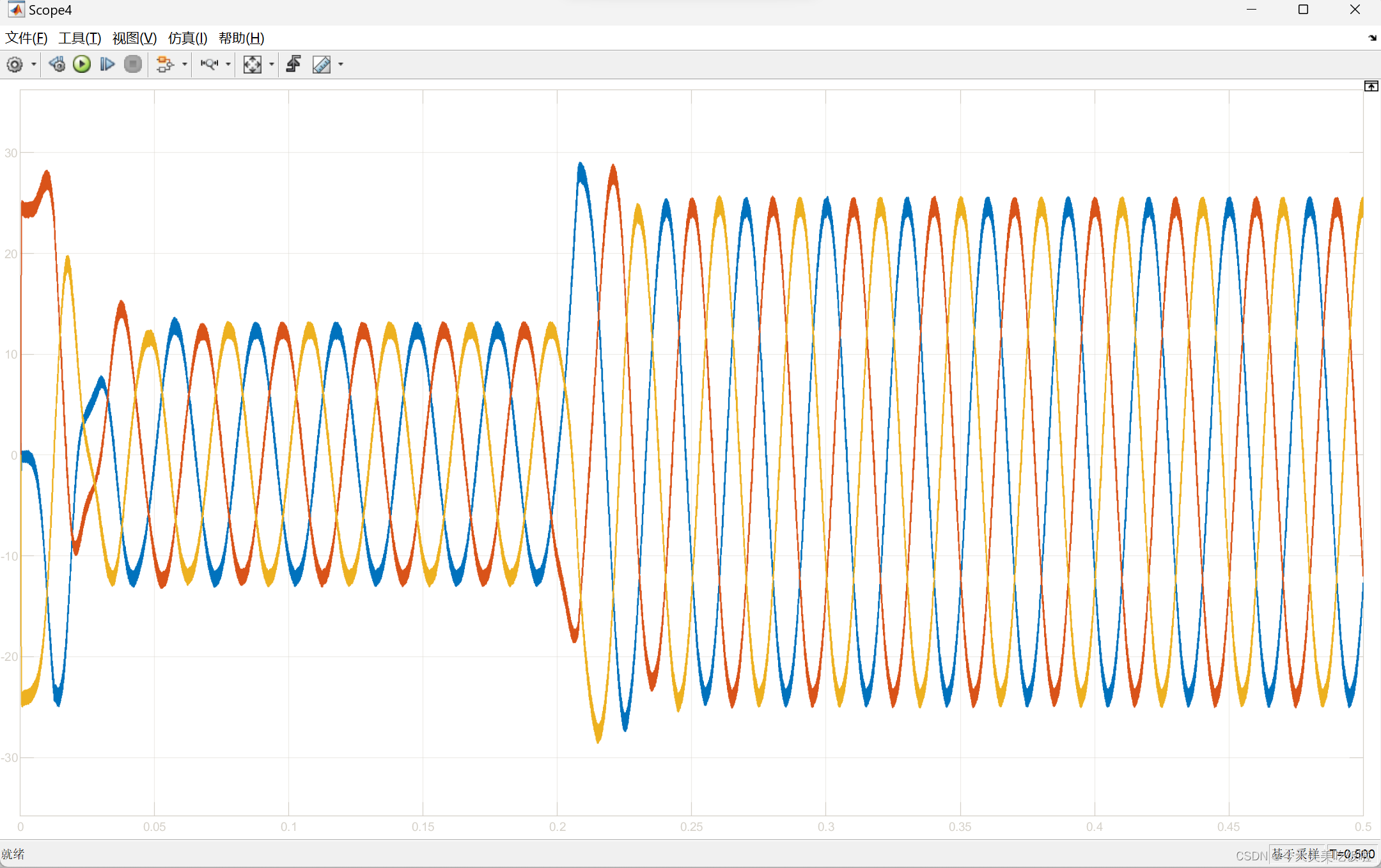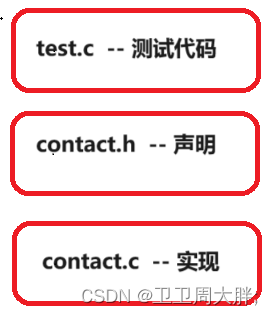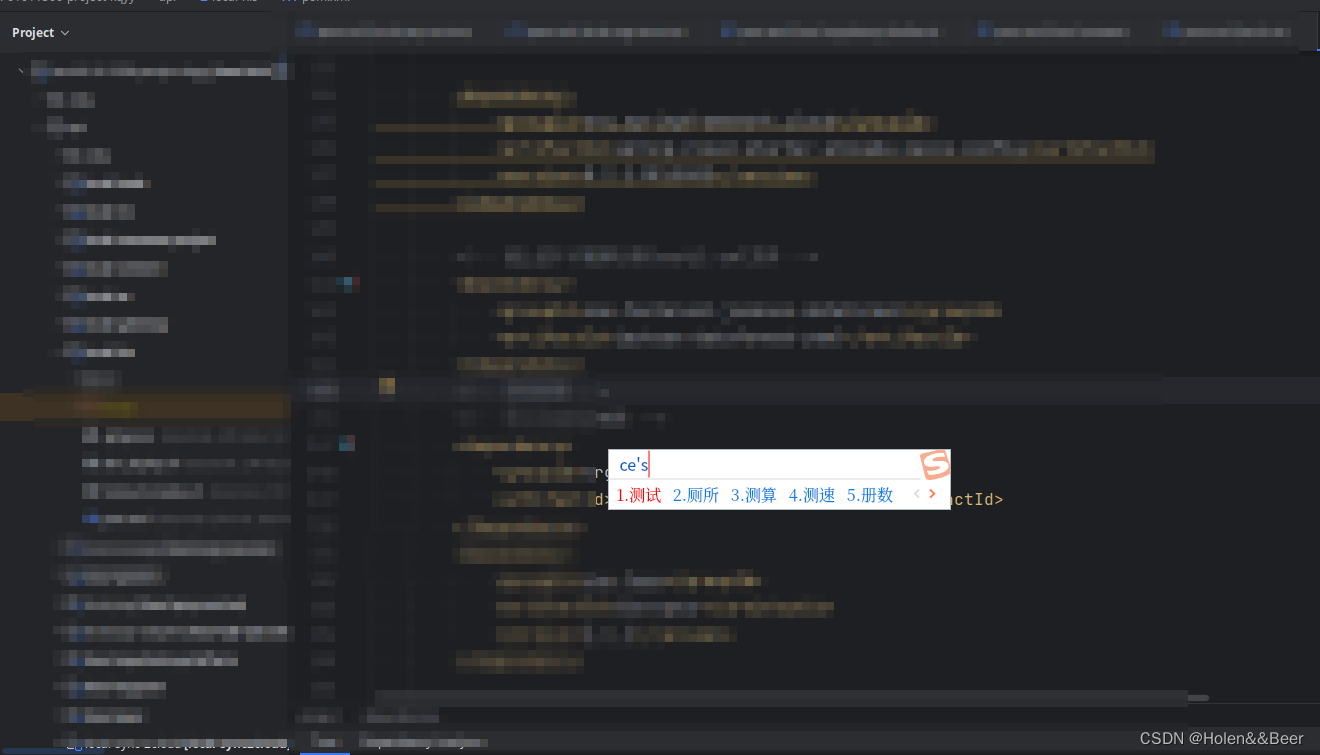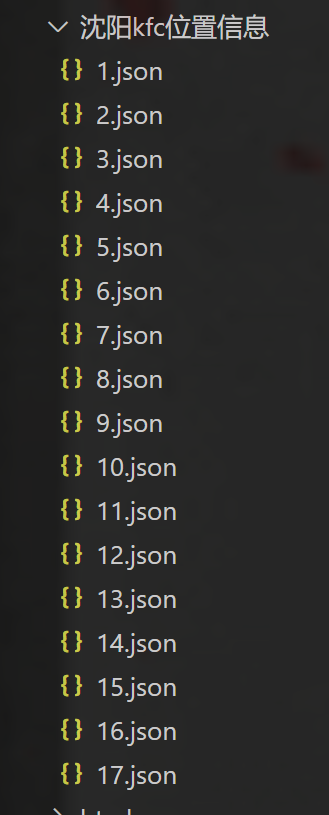
目录
一、map和set的使用
1、序列式容器和关联式容器
2、set的使用讲解
3、map的使用讲解
二、multiset和multimap
1、multiset和multimap的使用
2、OJ题:前k个高频单词
一、map和set的使用
1、序列式容器和关联式容器
序列式容器:vector/list/string/deque
序列式容器才支持push等操作,关联式容器不支持
关联式容器:map/set/unordered_map/unordered_set
set和map的底层实现是平衡搜索二叉树
2、set的使用讲解
- set就是搜索树中的key模型
- set的特性:①、会对插入的数据自动排序 ②、set是不允许修改值的 ③、set中不允许出现重复的数值,即使存在,也只会留一个
- set的遍历:①、迭代器遍历 ②、范围for遍历(因为支持迭代器遍历就一定支持范围for)
- set的拷贝构造
- set的插入只有insert,其没有push、pop等,因为它是关联式容器
- set的find,find找到了会返回被查找元素的迭代器,没找到返回end(),故应检查找没找到
- 那set的find和库里面提供的find有什么区别呢?
- 都可实现查找,区别在于效率
- set是搜索二叉树的:时间复杂度:O(logN),而算法中的是O(N)
- 算法中的find是个模板,其实现是为了所有容器可以通用它,故set尽量用自己的find
- set的删除
- ①、erase(待删除位置的迭代器) ②、erase(待删除数据) ③、erase(s.begin(), s.end())【即迭代器头和尾,其效果等价于clear 】
因为set是key模型,是看在不在,如果把中国所有人的信息存入到set中,最多搜索次数才31次,因为搜索二叉树的效率:O(logN)2^31就=20多亿了,这个效率是非常好的
代码如下:
void test_set()
{set<int> s;s.insert(3);s.insert(1);s.insert(4);s.insert(3);s.insert(7);//set : 排序+去重set<int>::iterator it = s.begin();while (it != s.end()){cout << *it << " ";++it;}cout << endl;//支持迭代器,就支持范围forfor (auto e : s){cout << e << " ";}cout << endl;set<int> copy(s);//set的深拷贝for (auto& e : copy){cout << e << " ";}cout << endl;//auto pos = s.find(3);//可用auto推导类型//set<int>::iterator pos = s.find(3);//find查找返回迭代器 find找到了会返回元素的迭代器,没找到返回end()//if (pos != s.end())//{//找到了才能删除// s.erase(pos);//erase会删除迭代器位置的数据//}//若erase直接给值,若值不存在,也不会报错,但迭代器必须存在那个位置set<int>::iterator pos = find(s.begin(), s.end(), 3);//使用算法中的findif (pos != s.end()){s.erase(pos);}for (auto& e : s){cout << e << " ";}cout << endl;
}运行结果:
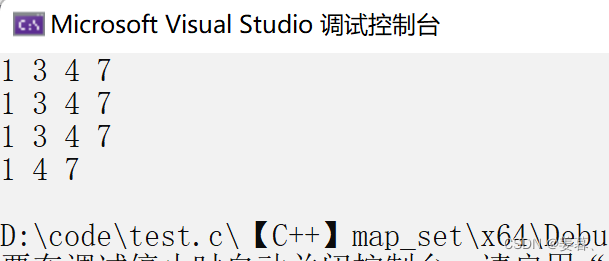
3、map的使用讲解
- map就是搜索树中的key/value模型
- map的遍历:①、迭代器遍历 ②、范围for遍历
- map的类型是pair,pair存的一个是key的,一个是value的类型
- map的构造函数:①、pair构造函数 ②、make_pair函数模板构造一个pair对象
void test_map1() {map<int, int> m;//m.insert(1, 1);//编译不通过m.insert(pair<int, int>(1, 1));//pair构造函数,构造一个匿名对象m.insert(pair<int, int>(3, 3));m.insert(pair<int, int>(2, 2));m.insert(make_pair(4, 4)); //函数模板构造一个pair对象map<int, int>::iterator it = m.begin();while (it != m.end()){ //*it等价于pair,而要访问它的成员cout << it->first << ":" << it->second << " " << endl;//也可以用(*it).first (*it).second//operator* 返回值是节点中值的引用//operator->返回值是节点中值的指针,即pair<k,v>指针//本质上为了可读性,这里省略了一个->++it; }cout << endl;for (auto& e : m){//first就是key值,即pair中的第一个值,second就是value值,即pair中的第二个值cout << e.first << ":" << e.second << endl;}}
- map构造函数两种方法的区别
void test_map2() {//一般写项目不会把std库中的全引进来,而是如下代码,make_pair明显更加简洁std::map<std::string, std::string> dict;dict.insert(pair<std::string, std::string>("metric", "米制的"));dict.insert(make_pair("potent", "强大的"));dict.insert(make_pair("deplete", "大量减少"));std::map<std::string, std::string>::iterator it = dict.begin();while (it != dict.end()){cout << it->first << ":" << it->second << endl;++it;}cout << endl; }
可见使用make_pair会使代码更简洁
以下是map的应用:统计水果出现的次数【本质是key/value模型的应用】
法一:利用map的find(用key值来查找,而不是value值)
void test_map3() {//用STL中的map怎么统计水果出现的次数呢?string strs[] = { "西瓜","樱桃","苹果","西瓜","西瓜","西瓜","西瓜","苹果" };map<string, int> countMap;for (auto & str : strs){map<string, int>::iterator ret = countMap.find(str);if (ret != countMap.end()){ret->second++;//相当于value++}else{//第一次出现,直接插入value为1countMap.insert(make_pair(str, 1));}}for (auto& e : countMap){cout << e.first << ":" << e.second << endl;} }
法二、map的operator[ ]求解
我们之前学的容器只有string,vector和deque才有operator[ ],而这里map的operator[ ]还有所不同
下面是operator[ ]的底层
可见给operator[ ]一个key值,它返回对应的value值的引用
那就可以把求水果出现的次数代码用operator[ ]实现进一步优化
void test_map3() {//用STL中的map怎么统计水果出现的次数呢?string strs[] = { "西瓜","樱桃","苹果","西瓜","西瓜","西瓜","西瓜","苹果" };map<string, int> countMap;for (auto& str : strs){//法二、operator[]实现countMap[str]++;//给key值:字符串,返回对应value的引用:次数}for (auto& e : countMap){cout << e.first << ":" << e.second << endl;} }
法三、map的insert求解
operator[ ]的底层是调用insert实现的,故想了解operator[ ]要先了解insert
insert的其中一个版本是
pair<iterator, bool> insert (const value_type& val);它返回值的意思:
单元素版本:(1)返回pair,其成员pair::first设置为一个迭代器,该迭代器指向新插入的元素或映射中具有等效键的元素。如果插入了新元素,则pair::第二个元素设为true,如果已经存在等效键,则设为false。
理解:
insert对于插入不存在的数据充当插入作用,pair的first指向新插入元素,second设为true,但若插入一个已经存在的数据,insert充当查找作用,pair的first指向之前存在的那个元素,second设为false
利用insert这个版本的特点,我们可以把水果出现的次数再写一个insert的版本
void test_map3() {//用STL中的map怎么统计水果出现的次数呢?string strs[] = { "西瓜","樱桃","苹果","西瓜","西瓜","西瓜","西瓜","苹果" };map<string, int> countMap;for (auto & str : strs){//法三、insert实现pair<map<string, int>::iterator, bool> ret = countMap.insert(make_pair(str, 1));//也可写为auto ret = countMap.insert(make_pair(str, 1));//如果插入成功,那就说明之前在map中没出现过,value为1即可if (ret.second == false){//插入失败,说明之前存在这个数据,迭代器指向之前出现的那个元素ret.first->second++;//用迭代器访问到这个元素的value值}}for (auto& e : countMap){cout << e.first << ":" << e.second << endl;} }
那insert是如何实现map的operator[]的?
- 如果水果不在map中,则[ ]会insert插入pair<str, int()> 等价于 pair<str, 0>,那么返回映射对象(次数)的引用就进行了++1
- 如果水果在map中,则operator[ ]返回水果对应的映射对象(次数)的引用,对它++
下面讲解下map的operator[ ]的多种功能
void test_map3() {//用STL中的map怎么统计水果出现的次数呢?string strs[] = { "西瓜","樱桃","苹果","西瓜","西瓜","西瓜","西瓜","苹果" };map<string, int> countMap;for (auto & str : strs){//法二、operator[]实现countMap[str]++;//给key值:字符串,返回对应value的引用:次数}countMap["香蕉"]; //插入,因为第一次出现countMap["香蕉"] = 1; //修改,因为operator[]返回value的引用,故可修改cout << countMap["香蕉"] << endl;//查找,因为香蕉已经存在了countMap["哈密瓜"] = 5; //插入+修改,哈密瓜第一次出现,并对他的value进行了修改map<string, string> dict;dict.insert(make_pair("sort", "排序"));dict["string"];//key为string,value是string类型的构造函数【因为其是缺省值】,即空串 //插入(一般不会这样用)dict["string"] = "字符串";//返回value的引用,可以对其进行修改,能修改是因为返回value的引用 //修改,不算插入因为已存在dict["left"] = "左边";//插入+修改,因为"左边"第一次出现,故插入,插入后又对其value进行了修改for (auto& e : countMap){cout << e.first << ":" << e.second << endl;} }
注:传参只能传key,不能只传value不传key,因为底层是搜索树,搜索树要用key去比较大小,key只要进去了就不能修改了
一般使用operator[]去
- 插入+修改
- 修改
一般不会用它去查找,因为如果key不在会插入数据
总结:
二、multiset和multimap
1、multiset和multimap的使用
multiset和multimap除了在set和map的基础上支持数据重复出现外,根本没什么区别
void test_multi()
{//与set的区别是允许键值key冗余(重复)multiset<int> ms;ms.insert(3);ms.insert(2);ms.insert(3);ms.insert(1);ms.insert(4);ms.insert(5);for (auto e : ms){cout << e << " ";}cout << endl;auto pos = ms.find(3);cout << *pos << endl;++pos;cout << *pos << endl;++pos;//multi_map和map的区别和set与multi_set的区别一样//额外区别是muti_map没有operator[],因为当有多个相同的可以时,不知道返回哪个key对应的valuemultimap<string, int> mm;mm.insert(make_pair("苹果", 1));mm.insert(make_pair("苹果", 1));mm.insert(make_pair("苹果", 3));mm.insert(make_pair("西瓜", 2));mm.insert(make_pair("西瓜", 1));}
2、OJ题:前k个高频单词
思路:
①、先创建个map对象,利用operator[ ]对其中的字符串排序(会按ASCII码排序),那么key值应该是string,因为map是按照key值从低到高排序的
②、因为出现频率高的在前,且还有重复数据的出现,故使用multimap和仿函数
把countMap中的数据插入到multimap中,multimap的key值是int类型的,那相当于multimap按出现频率排序,那出现频率高的就会在前,而出现频率相同的,之前operator[ ]已排好序了,按字典顺序排的,小的ASCII码在前
③、因为返回vector<string>,故只把multimap中的string存入到结果中即可,访问他的string即迭代器位置->second
class Solution {
public:vector<string> topKFrequent(vector<string>& words, int k) {map<string, int> countMap;//统计每个字符串出现了多少次for (auto& e : words){countMap[e]++;//map会自动对key值排序,即对string排序,并修改对应的value值}//但我们现在需对value值排序,即对int排序,因为要找出现频率高的//法一、将pair<string, int>键值对放到vector中,用sort排序,还要写一个//按int比较的仿函数,因为sort是快排实现的,不稳定,排完了,还需对次数相同的按字母排,要存入vector是因为//sort只供支持随机访问的容器使用,如vector、deque//法二、用multimap按次数排序,利用仿函数控制从大到小排multimap<int, string,greater<int>> sortMap;//multimap可以保证数据的重复出现for (auto& kv : countMap){sortMap.insert(make_pair(kv.second, kv.first));//排完序后插入到multimap,其会按int从大到小排//排完后//出现次数高的在前面,而出现次数相同的,之前已用operator[]按string排序了}vector<string> v;auto it = sortMap.begin();while (it != sortMap.end()){if (k == 0)break;v.push_back(it->second);//插入字符串++it;--k;//插入完一个就--}return v;}
};


